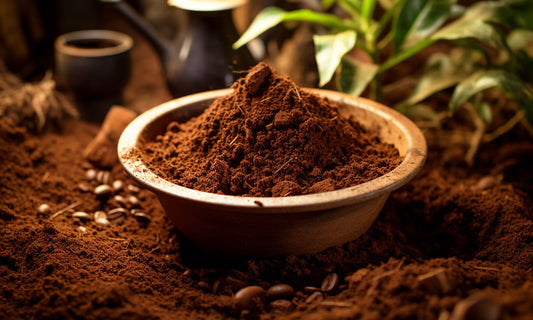Welcome to the world of coffee tasting, where the rich and diverse flavors of Costa Rican brews await your discerning palate. In this guide, we will delve into the art of coffee tasting, taking you on a journey to fully appreciate the unique profiles of Costa Rican coffee.
Whether you're a seasoned coffee aficionado or a curious beginner, this guide will help you develop your tasting skills and unlock the nuances of this exquisite brew.
The Basics of Coffee Tasting
When it comes to coffee tasting, understanding the basics is essential in developing a discerning palate. By following these fundamental steps, you can enhance your appreciation for the rich flavors and aromas that coffee has to offer.
The Importance of Freshly Roasted Beans
One of the key factors in coffee tasting is using freshly roasted beans. Roasting is a delicate process that brings out the unique flavors and aromas of the coffee. Opt for beans that have been roasted within the past two weeks to ensure maximum freshness and flavor.
Proper Brewing Techniques
The brewing process plays a crucial role in the taste of the coffee. Whether you prefer a French press, pour-over, or espresso, it's essential to follow the proper techniques to extract the optimal flavors. The water-to-coffee ratio, brewing time, and water temperature all contribute to the final result.
Aroma, Taste, and Body
When tasting coffee, pay attention to the trifecta of aroma, taste, and body. The aroma gives a preview of what to expect, while the taste reveals the flavor notes present in the coffee. The body refers to the weight and texture of the coffee, which can range from light and delicate to bold and full-bodied.
By taking the time to appreciate the aroma, savor the taste, and observe the body of the coffee, you can fully immerse yourself in the tasting experience and discover the nuances each brew has to offer.
Exploring the Flavors of Costa Rican Coffee
In this section, we will focus specifically on Costa Rican coffee. Costa Rican brews are known for their unique characteristics and flavors that set them apart in the coffee world. The tropical climate and volcanic soil of this beautiful Central American country play a significant role in shaping the distinct taste profiles of Costa Rican coffee.
Costa Rican brews are often revered for their vibrant acidity, which gives the coffee a refreshing and bright flavor. The acidity provides a lively and tangy sensation on the palate, making the coffee taste lively and rejuvenating.
Furthermore, Costa Rican coffee is celebrated for its clean and balanced flavor. The combination of fertile volcanic soil and the meticulous cultivation and harvesting processes result in a coffee that is exceptionally smooth and well-rounded. Every sip of Costa Rican brews offers a delightful balance of sweet and savory notes, creating a truly enjoyable coffee experience.
Another notable aspect of Costa Rican coffee is its exquisite aroma. The beans are carefully roasted to perfection, releasing captivating fragrances of citrus, chocolate, and subtle floral notes. The captivating aroma wafts through the air, enticing the senses and adding another layer of pleasure to the coffee tasting experience.
For a more visual representation of the flavor profiles and nuances of Costa Rican coffee, refer to the table below:
| Flavor Notes | Description |
|---|---|
| Bright acidity | Refreshing and tangy taste |
| Clean and balanced | Smooth and well-rounded flavor |
| Aromatic | Citrus, chocolate, and floral fragrances |
As you delve into the world of Costa Rican coffee, be prepared to encounter a diverse range of flavors and indulge in a truly exceptional coffee experience. Whether you prefer a bright and zesty cup or a well-balanced and aromatic brew, Costa Rican coffee offers something for every coffee enthusiast.
Coffee Tasting Techniques
In the world of coffee tasting, there are various techniques and methods that enthusiasts use to fully appreciate the flavors and nuances of different brews. One popular method is cupping, a standardized process for evaluating coffee that allows for a systematic approach to assessing aroma, taste, and body.
Understanding Cupping
Cupping involves carefully observing and evaluating the sensory aspects of coffee, including its fragrance, aroma, acidity, body, and aftertaste. It provides a structured framework for comparing and analyzing different coffees side by side, allowing you to discern the subtle differences and complexities between each brew.
During a cupping session, coffee samples are rigorously assessed using specific protocols. A set amount of ground coffee is steeped in hot water, and then the resulting "slurry" is evaluated through a process of smelling, slurping, and spitting. This allows tasters to focus on the coffee's taste and mouthfeel without overpowering their senses.
Assessing Aroma, Taste, and Body
Aroma is an essential component of the coffee tasting experience. To assess aroma, coffee tasters deeply inhale the fragrant steam rising from the cup and take notes on the various scents detected, such as floral, fruity, or nutty undertones.
Taste evaluation involves slurping the coffee and allowing it to coat the entire palate. Tasters pay attention to taste qualities such as acidity, sweetness, bitterness, and any underlying flavor notes that may be present.
Body refers to the physical sensation and weight of the coffee in the mouth. Tasters assess whether the coffee feels light-bodied, medium-bodied, or full-bodied, noting the texture and viscosity of the liquid.
Considerations in Coffee Evaluation
When evaluating coffee, it's important to consider various factors that can affect its taste. Pay attention to the coffee's acidity, which can range from bright and lively to mellow and smooth. Sweetness also plays a role, with some coffees exhibiting natural sweetness while others may have flavors reminiscent of chocolate, caramel, or fruit.
Lastly, consider the coffee's aftertaste, which refers to the lingering flavors that remain in the mouth after swallowing. A pleasant and long-lasting aftertaste is often indicative of a high-quality coffee.
By mastering these coffee tasting techniques, you can develop a discerning palate and gain a deeper appreciation for the art of coffee. Now, let's delve into how you can enhance your overall coffee tasting experience with some expert tips and tricks.
Enhancing Your Coffee Tasting Experience
When it comes to coffee tasting, creating an optimal environment can elevate your experience and help you fully appreciate the flavors of each brew. Here are a few tips to enhance your coffee tasting journey:
- Water Temperature: Brew your coffee at the right temperature to extract the best flavors. For a balanced cup, aim for water temperatures between 195°F and 205°F.
- Brewing Time: The brewing time can significantly impact the taste of your coffee. Experiment with different brewing times to find the sweet spot that brings out the desired flavors.
- Tasting Cups and Spoons: Invest in quality tasting cups and spoons specifically designed for coffee evaluation. These tools can help you fully experience the aroma, taste, and body of each cup.
- Take Your Time: Coffee tasting is a sensory experience that requires attention and focus. Take your time to savor each sip and evaluate the nuances of flavor that unfold with every taste.
- Neutralize Your Palate: It's crucial to have a neutral palate before each tasting. Take a sip of water or eat a plain cracker or piece of bread to cleanse your palate between different coffees.
- Engage Your Senses: Use all your senses when tasting coffee. Observe the color, inhale the aroma, savor the taste, and feel the body of the coffee on your tongue. Engaging all your senses can enhance your perception of flavors.
- Keep a Tasting Journal: Consider keeping a tasting journal to record your observations, preferences, and discoveries. This can help you track your coffee tasting journey and develop your palate over time.
By following these tips, you can create an environment that allows you to fully immerse yourself in the world of coffee tasting. With practice and a discerning palate, you'll be able to appreciate the diverse flavors and characteristics of every coffee you encounter.
Take Away
Coffee tasting is truly an art form that allows us to explore and appreciate the intricate flavors and characteristics of different brews. Throughout this guide, we have delved into the basics of coffee tasting, explored the unique flavors of Costa Rican coffee, and learned various techniques to enhance our tasting experience.
By following the steps and techniques outlined in this guide, you can elevate your coffee appreciation to a whole new level. The journey of developing your palate starts with using freshly roasted beans, brewing coffee correctly, and paying attention to the aroma, taste, and body of the coffee.
As you embark on your exploration of Costa Rican coffee, remember that each cup is a treasure trove of rich and diverse flavors. Immerse yourself in the experience, savor every sip, and let the flavors transport you to the tropical landscapes and volcanic soil that give Costa Rican brews their unique taste.
So, what are you waiting for? Start your coffee tasting adventure today and get ready to uncover the hidden nuances and delights in every cup. Let your senses guide you, and remember, the art of coffee tasting is a never-ending journey of discovery!




